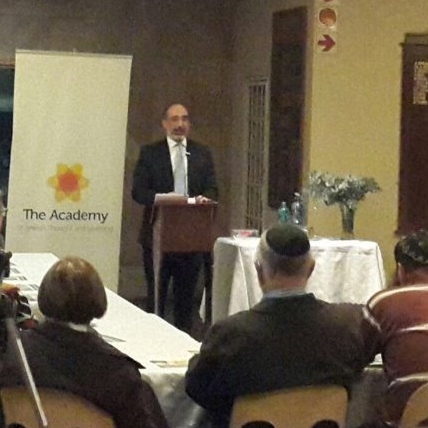click to dowload our latest edition
CLICK HERE TO SUBSCRIBE TO OUR NEWSLETTER


Published
7 years agoon
By
adminGILLIAN KLAWANSKY
While a legal system creates order in society, simply instilling order is not enough for an effective legal framework to function, Rabbi Goldstein argues. In the Torah, the legal system not only instils order, it lays out “righteous laws” and “therefore has moral implications”, he explains.
Indeed, numerous tyrannical human rights atrocities, like apartheid, have been under the guise of just instilling order. “Another example is the Nuremburg Laws which constituted the abuse of the legal system for enforcing cruelty.” Therefore, just creating order is an insufficient basis for a legal system.
To uncover the true purpose and meaning of “righteous” law according to Judaism, the chief rabbi provides four examples of radical changes in Western law, when it comes to the protection of human rights.
In these examples, Western law eventually came around to Torah principles and accepted and applied Torah law after centuries of an opposite way of thinking.
In one example, he looks at the model of “separation of powers” for the independent judiciary and the supreme Constitution – which means that the king or president does not have absolute power.
“Possibly one of the most important areas of resistance to the president are the courts,” he says. Yet this has not always been the case.
This idea was only adapted in Western countries during the French and American Revolutions just over 200 years ago, yet it’s an integral part of Torah law. “That is fundamentally the model of a Torah state in the form of the Sanhedrin, which could keep the king in check,” he says.
In South Africa today, we use the courts to hold the president accountable – with varying levels of success – as in the case of (President Jacob) Zuma and Nkandla where the courts held Zuma in violation of the Constitution.
Rabbi Goldstein also looks at the example of poverty alleviation. The position for centuries throughout the European continent and the UK, was that begging and homelessness were illegal, he explains.
“In Torah law, not only is it permissible to beg, but if a beggar asks for money, you have a halachic obligation to give them something.”
Western law eventually came around to Torah law to the point where not only is poverty allowed, there’s also the concept of a welfare state where the state looks to support people in poverty.
Quoting Rabbi Mordechai Pinchas Taitz, of Elizabeth, New Jersey, the chief rabbi says: “The Torah speaks in the language of tomorrow.” Explaining, he says: “It’s ahead of its time, not behind it – we may not fully understand Torah ideas until the world has developed to a point where we can grasp their impact and significance.”
Through examining these examples, the true purpose of law according to the Torah, became clear: to protect people who are vulnerable – known as the vulnerability principle. “The vulnerability principle provides a vision for how we see the role of society and of human beings”, he explains.
Yet vulnerability is a complex idea as there can be shifting vulnerabilities and the needs of both sides need to be balanced.
“The true purpose of the vulnerability principle and therefore of a legal system – that extends beyond law and order – is ultimately to create an environment where the human spirit can flourish and reach its potential. We need to make this principle part of our lives so that we can nurture greatness in all the people around us,” he says.
Before concluding, the Greenside community challenged the chief rabbi with questions that have long been areas of debate. Asked about the fact that Torah laws are often left open to interpretation, the chief rabbi said: “The Torah functions as a legal system, a very sophisticated one.
“It has a system of rules and laws and principles within which things are interpreted, but the space for interpretation is not blank. For example, on an ideological level we have the 13 Principles of Faith and interpretations have to fall within this space. So, rabbinical debates fall within the framework of a system – it’s not a free-for-all.”
Finally, he was questioned around the idea of helping humans achieve their potential. “If that’s the case,” asks one audience member, “then why can’t we nurture women who believe their true calling is to become rabbis? It’s merely a genetic difference.”
The chief rabbi responded: “Torah law has many different dimensions – what we believe is that G-d gave us the system as a model for the flourishing of the human spirit – and the best way for it to flourish is through performing mitzvot. It is through these that we reach our potential… So the framework within which we live our lives is through the mitzvot and the halacha.
“Anything imposed by the halacha is a part of G-d’s plan for the fruition of the human spirit – there are places within the halacha in which the role of women and men are defined and within which they can reach their potential; the system doesn’t view it as denying the potential of the person, but rather sees it as the fruition of the potential of the person.
“While women can’t publicly lead services, one of the most important parts of being a rabbi is teaching and women and men are both able to learn and teach Torah – no-one has a monopoly on this.”
